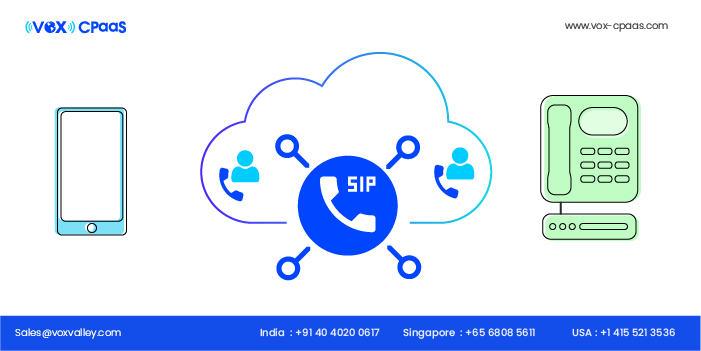Direct Inward Dial or Virtual numbers and uses (Tringy and CPaaS)

Most businesses have multiple telephone lines used for different purposes. Be it for sales, customer support, or resolving issues of their customers.
And, no customer wants to be unaddressed while looking for support.
For any business, managing all these calls being at a physical location can be a daunting task.
But not anymore!
The advent of internet telephony has made it possible to pick up calls from anywhere in the world as though you were located in the area that your telephone number belongs to.
The reallocation of these calls is made possible with the help of DID numbers.
Let’s deep dive to know more about these numbers.
What is DID or Virtual numbers?
DID (Direct Inward Dialling) or Virtual numbers is a telephone service where the calls get directly routed to a specific phone number at a business instead of a customer going to a queue or menu or dialing an extension.
These are also called virtual numbers because they are not fixed to any location and helps you place outgoing and receive incoming calls on any phone such as VoIP phones, softphones, or desk phones without having any hassle of wires.
And, these numbers do not require a SIM card or any physical address to place calls.
The biggest advantage of using Virtual numbers is they provide anonymity on your landlines and are best for the employees who work in remote areas.
How DID works?
DIDs work in any one of the two ways; they can either work through VoIP (Voice over Internet Protocol) phones or PSTN (Public Switched Telephone Network).
First, let’s see how it works on VoIP:
DID on VoIP:
Direct Inward Dialling on VoIP phones can be employed with the help of SIP trunking which are virtual links that can be linked using the internet only when you require them. With Voxvalley SIP trunking, the virtual numbers can be configured easily into your internal systems and are linked to your extensions with a software application named Tringy.
For suppose, if someone makes a call to any of your business numbers, SIP will send the trunk line connections to your business PBX. Where your PBX then connects the call with the intended extension based on the number dialed.
DID on PSTN:
In PSTN, the telephone service provider connects the set of trunk lines to your business-hosted PBX, thereafter assigns you the block of numbers as your direct inward dialing numbers.
For suppose, whenever a call comes on your DID number, it gets routed to your PBX via a trunk line.
Where the PBX then routes the call to one of your business phone extensions without the need for an auto attendant.
Now, let’s have a look at the uses that DIDs provide to your business.
Uses of DIDs:
· Reduce the higher caller rates for your business while placing international calls or long-distance calls
· DID allows your business to support customers 24/7 without demanding your operators to work at unusual times.
· Incoming calls received on DID numbers can be forwarded to your network using VoIP phones over the internet.
· Alongside, Virtual numbers support your advanced cloud-based PBX system and expose you to many PBX features like recording, menus, conferencing, voice mails, etc.
· Provides you the flexibility in call capacity handling by allowing you to add or remove channels based on the call traffic.
· Virtual numbers allow you to buy numbers globally- if you have your customers spread across. Buying numbers in the country helps your business build trust with customers.
Voxvalley software application Tringy allows you to easily integrate contacts to your native address book and helps you place outgoing calls using DIDWW outbound trunk service.
The adoption of DID numbers can transform your business and help you reduce operational costs making your systems more efficient.
If you’re interested in purchasing DID numbers, Sign up for a free trial or reach out to our experts for more information.